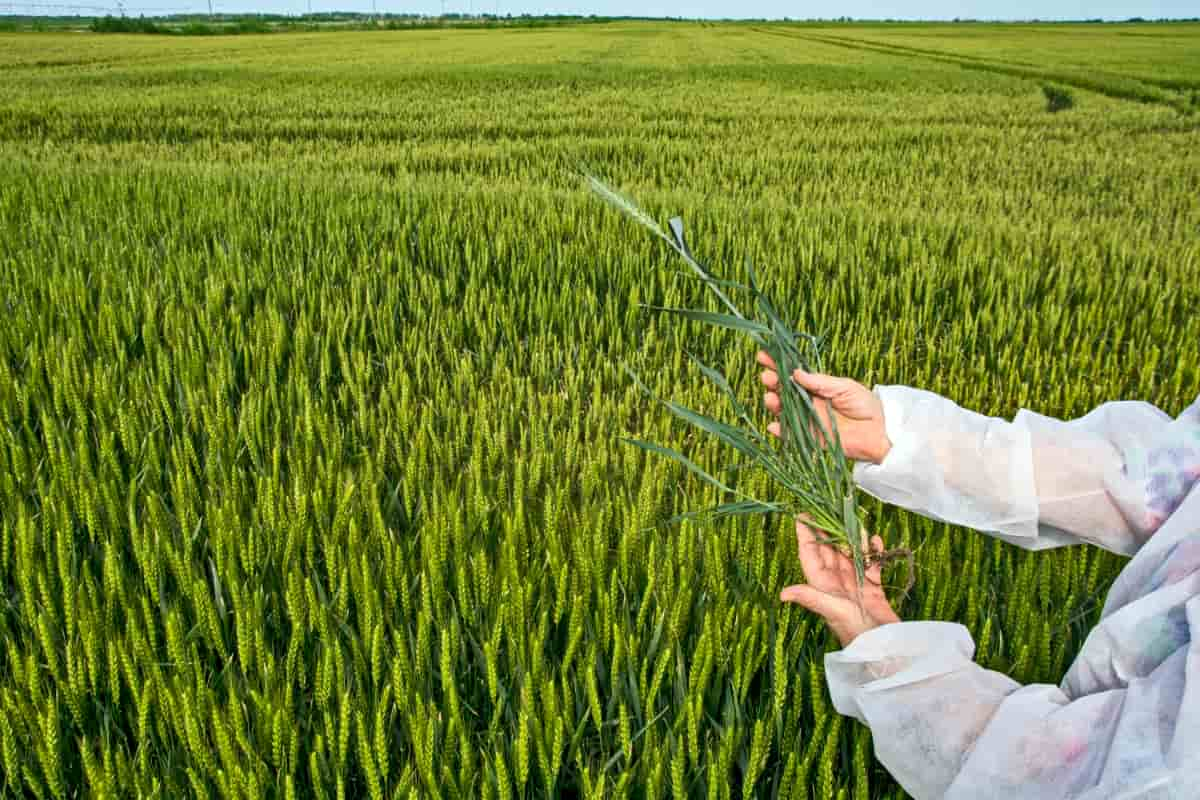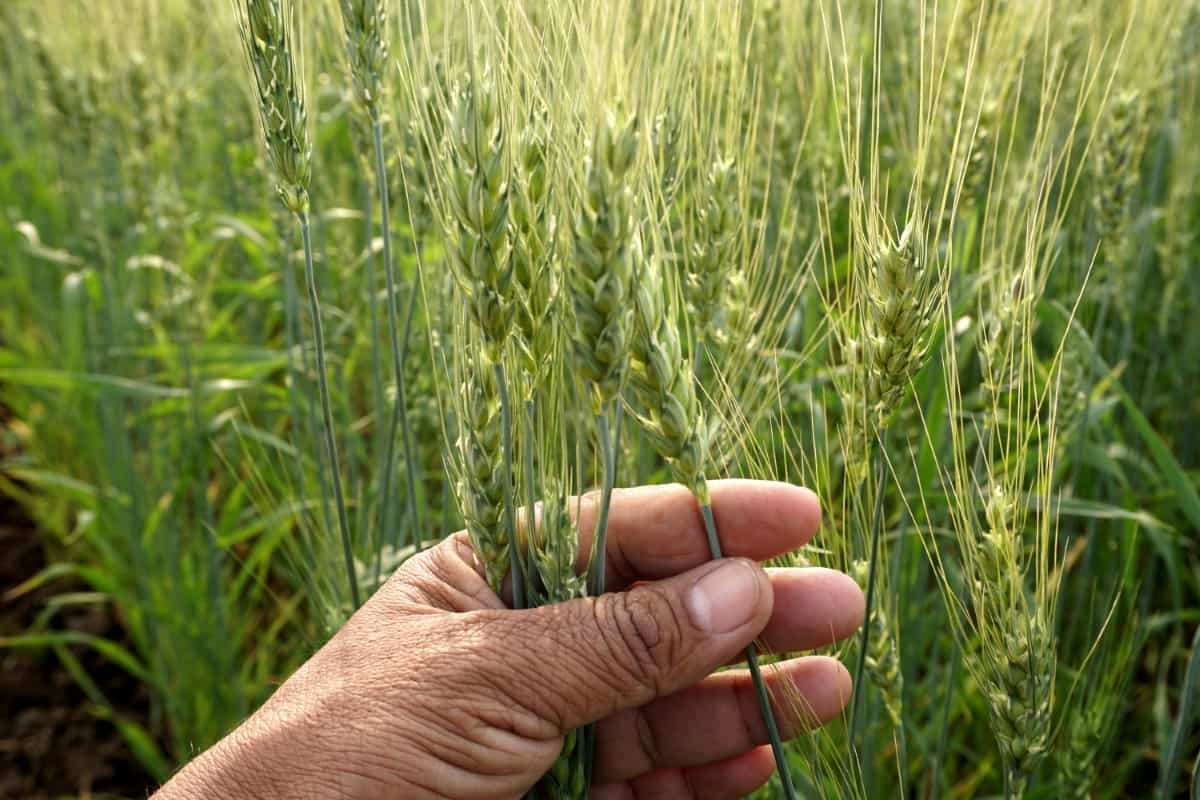Controlling Pink Stem Borer in wheat involves recognizing symptoms like damaged stems and poor growth. Causes include larvae infestation. Treatment entails using appropriate pesticides and cultural practices. Effective control management combines monitoring, biological methods, and resistant wheat varieties for long-term solutions.

How to Control Pink Stem Borer in Wheat
Identification and spread of Pink Stem Borer in Wheat
The Pink Stem Borer, a well-known pest in wheat farming, is identifiable by its distinctive pink larvae. The borers cause harm to wheat by consuming the inner parts of the stems, resulting in stunted development and decreased crop production. Wind and the movement of infected plant materials facilitate their spread. Efficient management includes the implementation of crop rotation, the use of resistant cultivars, and the timely application of pesticides.
Early detection monitoring is essential. Gaining knowledge of their life cycle facilitates the identification of appropriate therapies during critical periods. Farmers are recommended to be watchful, particularly during seasons of increased borer activity. Effective management of this agricultural pest is crucial for ensuring the long-term viability of wheat production.
Reasons for Pink Stem Borer
The Pink Stem Borer is a pest that attacks wheat crops due to weather and farming-related factors. It thrives in high temperatures and humidity, which unpredictable climate change frequently makes worse. The persistent production of wheat without crop rotation also contributes to the widespread occurrence of these pests.
The absence of crop diversification promotes a consistent food supply, allowing the pest to grow unrestricted. Additionally, incorrect use or excessive dependence on chemical pesticides can lead to pest resistance, making them harder to manage. Therefore, effective management of these elements is crucial to control and avoid Pink Stem Borer infestations in wheat harvests.
Host Plants and Economic Impact
Sesamia inference primarily targets rice but also affects other crops like maize and sugarcane, significantly impacting wheat harvests by burrowing into plant stems, hindering nutrient transport, and reducing crop productivity. This invasive insect, prevalent in Asian wheat fields, can reduce wheat quality and quantity, impacting market prices and farmer earnings. The infection can lead to a 20% reduction in crop production, a significant concern given wheat’s global importance.
In case you missed it: Wheat Fertilizer Requirements and Recommendations: Management for Optimal Yield

Managing this insect is challenging due to its life cycle and resistance to certain pesticides. Efficient management techniques include crop rotation, resistant cultivars, and careful pesticide application, with a focus on integrated pest control to reduce economic losses and promote sustainable wheat production.
Life Cycle and Development
The Pink Stem Borer has a complex life cycle. The life cycle starts with the deposition of eggs on host plants, which then hatch into larvae. The larvae, which are the most detrimental phase, bore into the stems, hindering the development of plants. Following their meal, the organisms undergo metamorphosis and enter a transitional stage known as pupae, which occurs inside the stem or soil.
Ultimately, they transform into mature moths, beginning the cycle once again. The whole process depends on temperature and might exhibit variability in length. To achieve effective management, it is crucial to comprehend this cycle since targeted treatments during certain phases, such as the larval stage, may greatly reduce crop damage. Therefore, it is essential to closely monitor and promptly take action in order to effectively reduce the effects of the Pink Stem Borer on agriculture.
Pest Management Strategies
- Cultural Practices: Employ crop rotation and deep plowing during off-seasons to disrupt the life cycle of borers.
- Resistant Varieties: Cultivate wheat varieties known for their resistance to Pink Stem Borer.
- Biological Control: Introduce natural predators or parasites specific to Pink Stem Borers.
- Chemical Control: Use insecticides judiciously, focusing on targeted application during vulnerable stages of borer development.
- Integrated Pest Management (IPM): Combine multiple strategies, including cultural, biological, and chemical methods, for effective control.
Monitoring and Scouting
- Identify the Pest: Pink stem borer is a significant pest in wheat fields, distinguished by its small size and pinkish body.
- Scouting Timing: Regular field inspections are crucial, especially during early crop stages for early detection.
- Signs of Infestation: Look for wilted or stunted wheat plants and whiteheads indicating larval presence inside stems.
- Sampling Method: Use random sampling across different field sections to assess infestation levels.
- Threshold Level: Determine action thresholds based on pest density and crop growth stage.
- Control Strategies: Consider biological controls and targeted insecticides if thresholds are exceeded.
Economic Thresholds and Decision-Making
The management of the Pink Stem Borer requires a vital decision-making process to find the optimal balance between costs and benefits, known as economic thresholds. The threshold refers to the point at which the expenses incurred for pest management are equivalent to the reduction in crop production. Precisely establishing this threshold is essential for efficient pest control.
In case you missed it: From Seed to Harvest: How Farmers Plant and Grow Wheat in Nebraska

The decision-making process takes into account variables such as insect population, crop stage, and possible production reduction. This method guarantees that interventions are both economically efficient and prompt, therefore minimizing the use of needless pesticides and maintaining the integrity of the ecosystem. Economic thresholds play a crucial role in enabling farmers to make well-informed choices, maximizing both financial benefits and sustainable agricultural practices.
Integrated Pest Management (IPM)
- Crop Rotation and Resistant Varieties: Rotating crops and using resistant strains reduce pest populations.
- Natural Predators and Biological Controls: Encouraging beneficial insects that prey on the borers.
- Monitoring and Thresholds: Regularly checking for pest levels to determine if intervention is needed.
- Physical Barriers and Mechanical Controls: Using traps and barriers to prevent borer infestations physically.
- Judicious Pesticide Use: Applying chemicals only when necessary, focusing on targeted, less harmful options.
Global Efforts
Global efforts to manage Pink Stem Borer in wheat are multifaceted and innovative. This pest, a significant threat to wheat crops, has prompted international collaboration. Strategies include.
- Developing resistant wheat varieties.
- Employing biological control agents like natural predators.
- Implementing integrated pest management practices.
Advances in genetic research are pivotal, aiding the creation of robust wheat strains. Furthermore, global data sharing and monitoring systems enhance early detection and response. These concerted efforts symbolize a blend of traditional agricultural wisdom and cutting-edge science, showcasing a united front against this agricultural challenge. The goal is sustainable, effective management, safeguarding wheat production worldwide.
Resistance in Wheat Varieties
Scientists have developed wheat varieties resistant to the Pink Stem Borer, a destructive insect that threatens wheat, a crucial food crop. These genetically modified varieties repel the borer, minimizing crop damage. Field testing ensures consistent and reliable functioning, and these varieties often resist harsh weather conditions. This contributes to sustainable agriculture and global food security, demonstrating integrated pest control, reducing reliance on chemical pesticides, and promoting natural balance. This method also promotes integrated pest control, reducing dependence on chemical pesticides.
In case you missed it: How to Grow Wheat Grass in Greenhouse: A Step-By-Step Guide for Seed to Harvest

Conclusion
To manage Pink Stem Borer in wheat, recognize early signs like stem discoloration and larvae presence. Employ integrated control with crop rotation, resistant varieties, and targeted pesticides. Regular monitoring and timely interventions are crucial for effective control.
- Feed Your Flock for Less: Top 10 Tips to Save on Chicken Feed
- Ultimate Guide to Ossabaw Island Hog: Breeding, Raising, Diet, and Care
- Hatching Answers: The Top 10 Reasons Your Chickens Aren’t Laying Eggs
- Eggs and Economics: Breaking Down the Cost of Raising Backyard Chickens
- Defend Your Greens: Proven Methods to Keep Iguanas Out of Your Garden
- Ultimate Guide to Cinnamon Queen Chicken: A Comprehensive Guide for Beginners
- Ultimate Guide to California Tan Chicken: Breeding, Raising, Diet, Egg-Production and Care
- Ultimate Guide to Marsh Daisy Chicken: Breeding, Raising, Diet, and Care
- 10 Types of Chicken Farming Businesses You Can Start for Profits